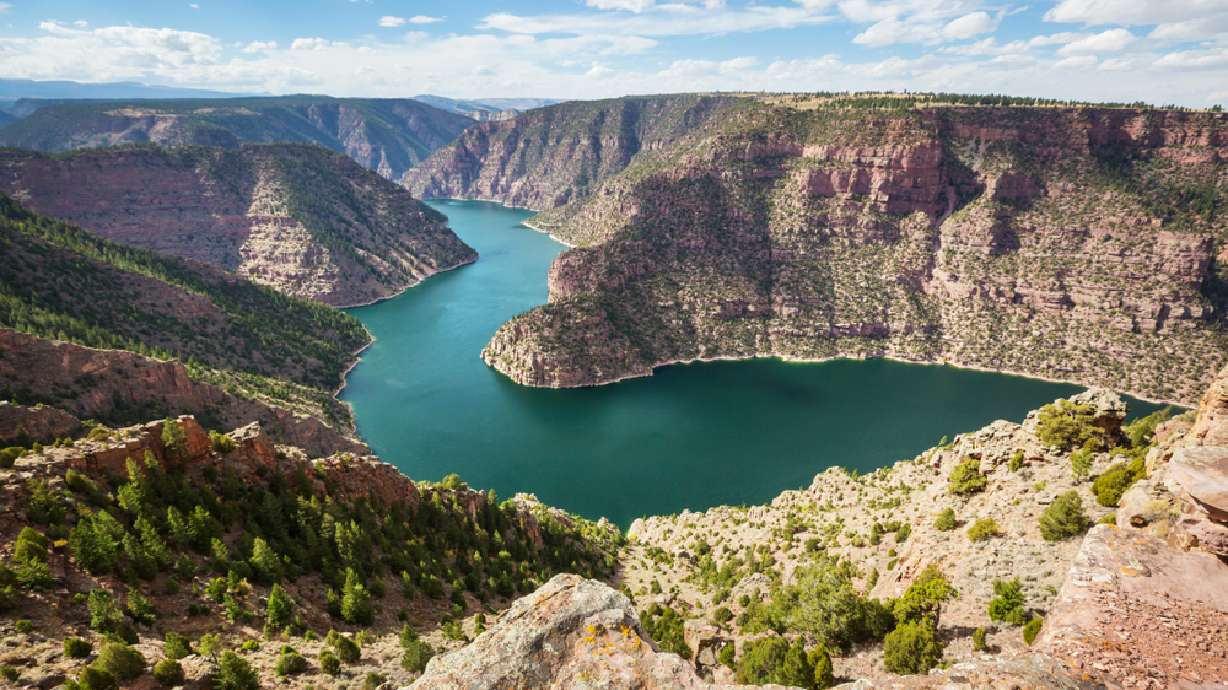Estimated read time: 2-3 minutes
This archived news story is available only for your personal, non-commercial use. Information in the story may be outdated or superseded by additional information. Reading or replaying the story in its archived form does not constitute a republication of the story.
MANILA, Daggett County — Utah and three other states have agreed to suspend additional water releases from Flaming Gorge, ending a program that began last year as an effort to boost Lake Powell reservoir levels.
The Upper Colorado River Basin states — Utah, Colorado, New Mexico and Wyoming — voted Monday to suspend the releases beginning Wednesday. The four states had approved a plan in April 2022 to release 500,000 acre-feet of water from Flaming Gorge Dam into Green River, which dumps into the Colorado River before reaching Lake Powell by the Utah-Arizona border.
While Lake Powell — currently listed at 22% capacity — fell to a new all-time low level again earlier this month, Gene Shawcroft, chairman of the Colorado River Authority of Utah, called the measure a "success" in that it helped the areas that depend on Lake Powell avoid serious consequences last summer. Experts had feared that there may not be enough water to generate electricity at the Glen Canyon Dam.
Despite its record-low levels, the Upper Colorado River Basin states determined that more Flaming Gorge releases were no longer needed. The basin's above-average snowpack this winter is expected to result in Lake Powell level increases this spring.
Officials said Monday that experts informed the states there is "little chance" that the lake will drop to 3,490 feet elevation "in the near term."
"The releases from Flaming Gorge succeeded in protecting critical elevations at Lake Powell," Shawcroft said. "Given the operation's success and improving hydrology, it's time to stop sending water downstream and start focusing on restoring Flaming Gorge."
Flaming Gorge entered this week at about 66% capacity, down 11 percentage points from the same point last year, according to Utah Division of Water Resources data. It was about 80% full when the four Upper Colorado River Basin states approved the release plan.
The reservoir is also expected to benefit from the snowpack runoff this spring.
Meanwhile, the U.S. Bureau of Reclamation announced in October 2022 that it may reduce downstream releases from the Glen Canyon Dam if levels continue to drop. Crews also recently added a new water intake system at the dam, which will allow nearby communities to continue to receive water even if the reservoir ever reaches its "dead pool" level in the future.









